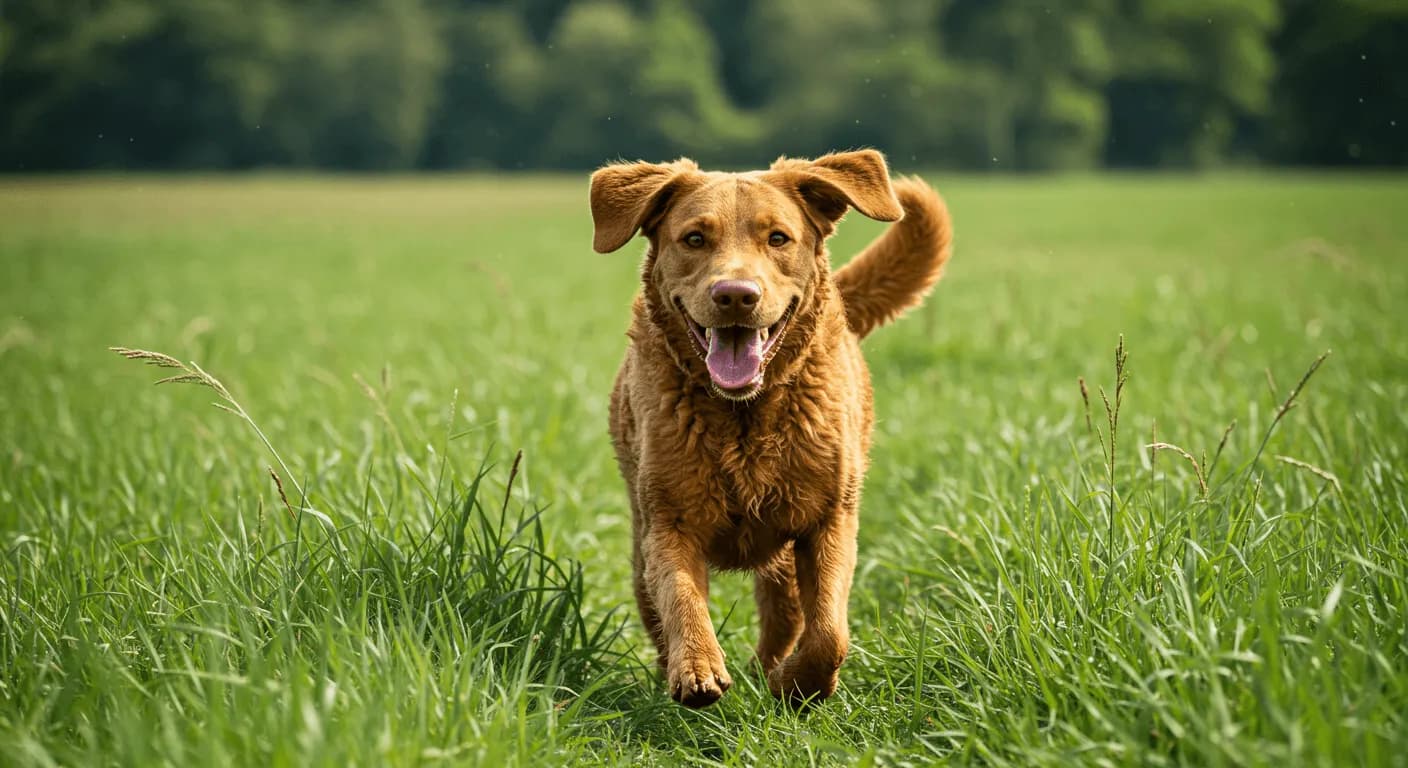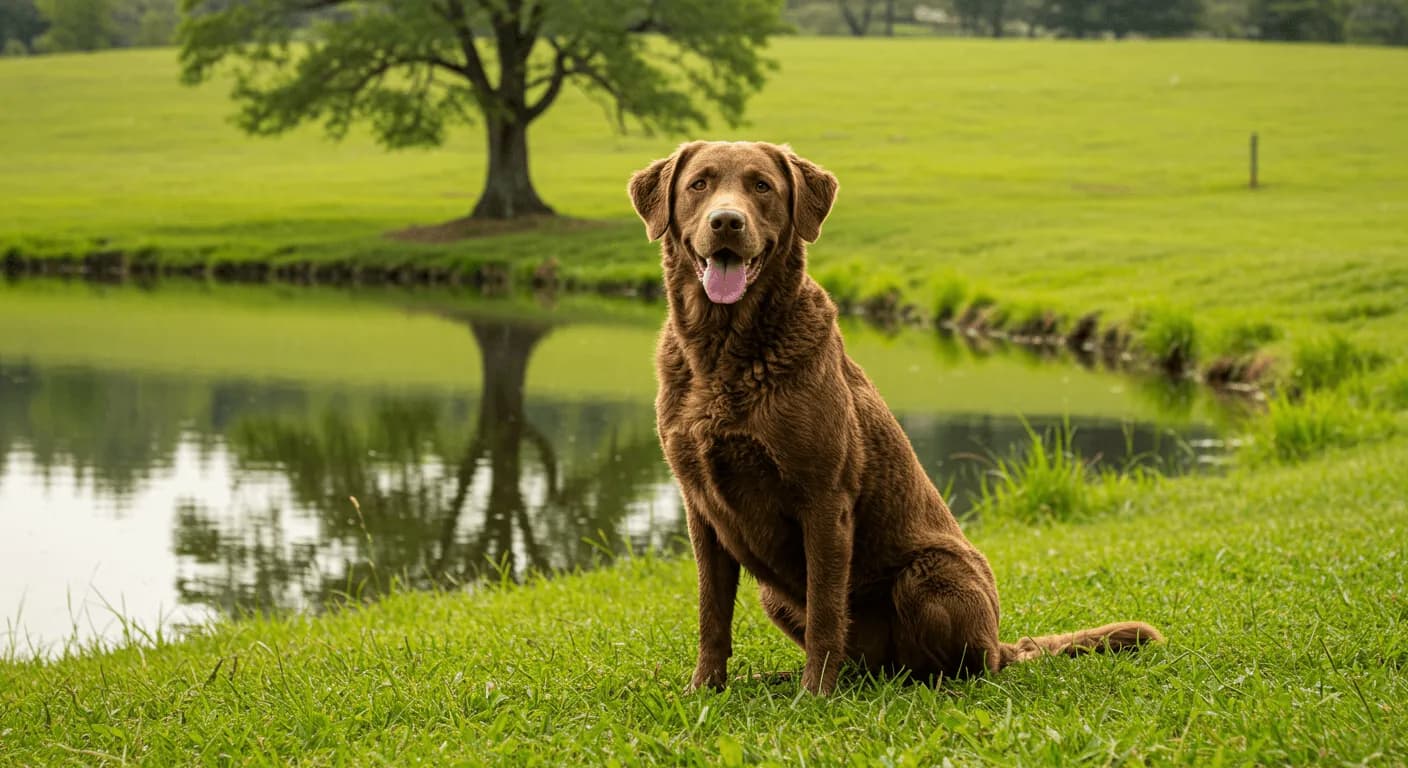Welcome to the ultimate Chesapeake Bay Retriever care guide! This loyal, intelligent, and hardworking breed is known for its rugged spirit and outstanding abilities in the water. Originally bred in the United States for retrieving waterfowl, the Chesapeake Bay Retriever—often simply referred to as the "Chessie"—is a tough and dependable companion. But as with any dog, proper care is essential to ensure your Chessie leads a long, healthy, and happy life.
Many people mistakenly believe that because the Chesapeake is a working dog, it requires little day-to-day maintenance. However, this breed has unique care needs that, when neglected, can lead to behavioral and health issues. In this article, we’ll explore how to take care of a Chesapeake Bay Retriever, covering everything from grooming and exercise to ethical questions like ear cropping and muzzle use.
Whether you're a new dog owner or an experienced handler looking to better understand your Chessie, you’ll find helpful, breed-specific guidance throughout this Chesapeake Bay Retriever care guide.
1. Understanding the Chesapeake Bay Retriever’s Temperament and Needs
Known for their courageous, loyal, and driven personality, Chesapeake Bay Retrievers are not your typical laid-back household dogs. Their background as waterfowl retrievers translates into high endurance and a love for both land and water activities.
Key Personality Traits
- Protective and loyal
- Independent and intelligent
- Sometimes reserved with strangers
- Excellent hunting and retrieving instincts
These dogs are affectionate with family but may be wary around unfamiliar people. Early and consistent socialization is vital to promote balanced behavior.
Energy Levels and Exercise Requirements
Chessies are high-energy dogs that need regular physical and mental stimulation. Without it, they can become bored or destructive. Their maintenance needs are higher than many breeds simply because they thrive best with a job to do.
Here are a few ways to meet their exercise needs:
- Daily walks or jogs of 30–60 minutes.
- Off-leash play in a secured yard.
- Swimming sessions—this breed particularly loves water.
- Interactive toys and puzzle games to engage their minds.
A tired Chessie is a well-behaved Chessie. If you’re wondering how to take care of a Chesapeake Bay Retriever, start with daily exercise and mental enrichment.
2. Grooming and Hygiene Needs
Chesapeake Bay Retrievers have a dense, waterproof double coat designed for insulation in harsh water conditions. One of their standout physical features, this coat needs special attention.
Coat Care and Shedding
The Chessie sheds year-round and experiences heavier seasonal shedding in spring and fall. Its coat is oily, which helps in water resistance.
To manage your Chessie’s grooming requirements:
- Brush him at least once a week using a rubber curry brush or slicker brush.
- During shedding season, brush more frequently to control coat blowouts.
- Avoid overbathing, as frequent baths can strip the natural oils essential for waterproofing.

Bathing, Nails, and Dental Hygiene
Though durable in the field, this breed still needs basic hygiene upkeep.
- Bathe every 2–3 months, or when especially dirty.
- Trim nails every 3–4 weeks to avoid splitting and joint stress.
- Brush teeth at least twice weekly with canine toothpaste.
These simple but essential grooming routines ensure your Chesapeake remains comfortable and healthy.
3. Health Concerns and Veterinary Care
The Chesapeake Bay Retriever is a generally healthy breed but is prone to certain hereditary conditions. Understanding these can help you proactively care for your dog.
Common Health Issues
Here are some of the most common concerns:
- Hip dysplasia
- Progressive Retinal Atrophy (PRA)
- Degenerative Myelopathy
- Hypothyroidism
- Gastric Torsion (bloat)
Working with a reputable breeder who performs health certifications can help avoid many genetic issues. Nevertheless, routine vet visits are a must.
Preventative Care
Here is an ordered list of steps to maintain optimal health:
- Schedule annual veterinary exams and discuss breed-specific screenings.
- Follow the vet-recommended vaccination schedule.
- Administer regular heartworm and flea preventatives.
- Maintain a consistent diet with fresh, clean water.
By staying on top of appointments and nutritional needs, you’ll better understand how to keep your Chesapeake Bay Retriever healthy.

4. Should a Chesapeake Bay Retriever’s Ears Be Cropped?
Ear cropping is a controversial practice where a dog’s ears are surgically altered for aesthetics or traditional reasons. This is not commonly performed on Chesapeake Bay Retrievers and is not considered part of the breed standard.
Ethics and Legal Regulations
- There is no functional benefit to cropping a Chessie’s ears.
- It causes pain and requires anesthesia and aftercare.
- Ear cropping is illegal or restricted in many countries.
Instead of focusing on cosmetic alterations, concentrate on routine ear cleaning to prevent infections—especially important because of their water activity.
5. Should a Chesapeake Bay Retriever’s Tail Be Docked?
Tail docking involves removing a portion of a puppy’s tail, often within the first few days of life. Again, this is not typical for Chesapeake Bay Retrievers.
Purpose and Problems
Historically, tails were docked in hunting breeds to prevent injury. However, this does not apply to the Chessie as their tail functions as a powerful rudder in water.
Pros of not docking:
- Full tail enhances swimming ability.
- Promotes better communication with humans and dogs.
- Avoids unnecessary pain and risk.
Unless recommended by a vet for medical reasons, there is no justification for docking your Chessie’s tail.

6. Should a Chesapeake Bay Retriever Be Muzzled?
Muzzling is often associated with aggression, but there are valid and humane reasons to use a muzzle on any breed, including the Chesapeake Bay Retriever.
When a Muzzle Might Be Needed
- During vet visits if your dog becomes extremely anxious.
- If your dog has shown signs of biting or high reactivity.
- In certain jurisdictions or environments that require it.
Choosing and Using a Muzzle
- Select a basket-style muzzle that allows panting and drinking.
- Introduce it gradually with positive reinforcement.
- Never use a muzzle as a punishment or long-term solution.
Training and socialization are always better long-term fixes, but understanding do Chesapeake Bay Retrievers need a muzzle prepares you for responsible handling in rare but essential scenarios.
7. Creating a Comfortable Living Environment
Chesapeake Bay Retrievers need a thoughtful living environment tailored to their physical and emotional needs. Their love for water and space must be balanced with family integration.
Indoor vs. Outdoor Living
While rugged, Chessies are not "backyard-only" dogs. They bond deeply with their family and need to be part of daily home life.
Recommended home setup:
- A home with secure outdoor space to run and play.
- Access to water for occasional swims.
- Comfortable indoor bedding in a draft-free, quiet area.
In urban settings, daily visits to parks or dog beaches can replicate their ideal environment.
8. Socialization and Family Compatibility
Chesapeake Bay Retrievers are loving family members when properly socialized. Though independent, they are deeply loyal and protective.
Interaction with Kids and Pets
- Generally affectionate with children when raised around them.
- May be reserved with strangers or new pets.
- Early socialization is key to avoiding territorial behavior.
Socialization Tips
Here are some key ways to socialize your Chesapeake Bay Retriever:
- Enroll in obedience classes by 8–12 weeks old.
- Expose them to different sounds, places, and people early on.
- Reward positive behavior around new pets and guests.
- Arrange playdates with well-mannered dogs.
Proper socialization can help answer "is Chesapeake Bay Retriever good with kids?" with a confident "Yes"—but only with responsible early exposure.
Conclusion
Caring for a Chesapeake Bay Retriever requires time, commitment, and a deep understanding of the breed’s unique characteristics. These strong, intelligent, and loyal dogs thrive when their physical and mental needs are consistently met. From their intense work ethic and high energy levels to their waterproof coats and independent personalities, Chessies are best suited for active families or individuals who appreciate the challenges and joys of having a driven working dog as a companion.
By following this Chesapeake Bay Retriever care guide, you’re taking proactive steps to ensure your dog is groomed properly, receives appropriate vet care, and lives in a supportive environment. Ethical considerations like avoiding unnecessary ear cropping or tail docking, as well as using muzzles appropriately, reflect responsible pet ownership. And remembering the importance of early socialization will help your Chessie become a well-rounded, happy member of your household.
In the end, knowing how to take care of a Chesapeake Bay Retriever means embracing everything that makes them special—their zeal for life, loyalty to their people, and dedication to whatever task lies before them. With love, proper care, and patience, your Chessie will reward you with unmatched devotion and years of joyful companionship.


